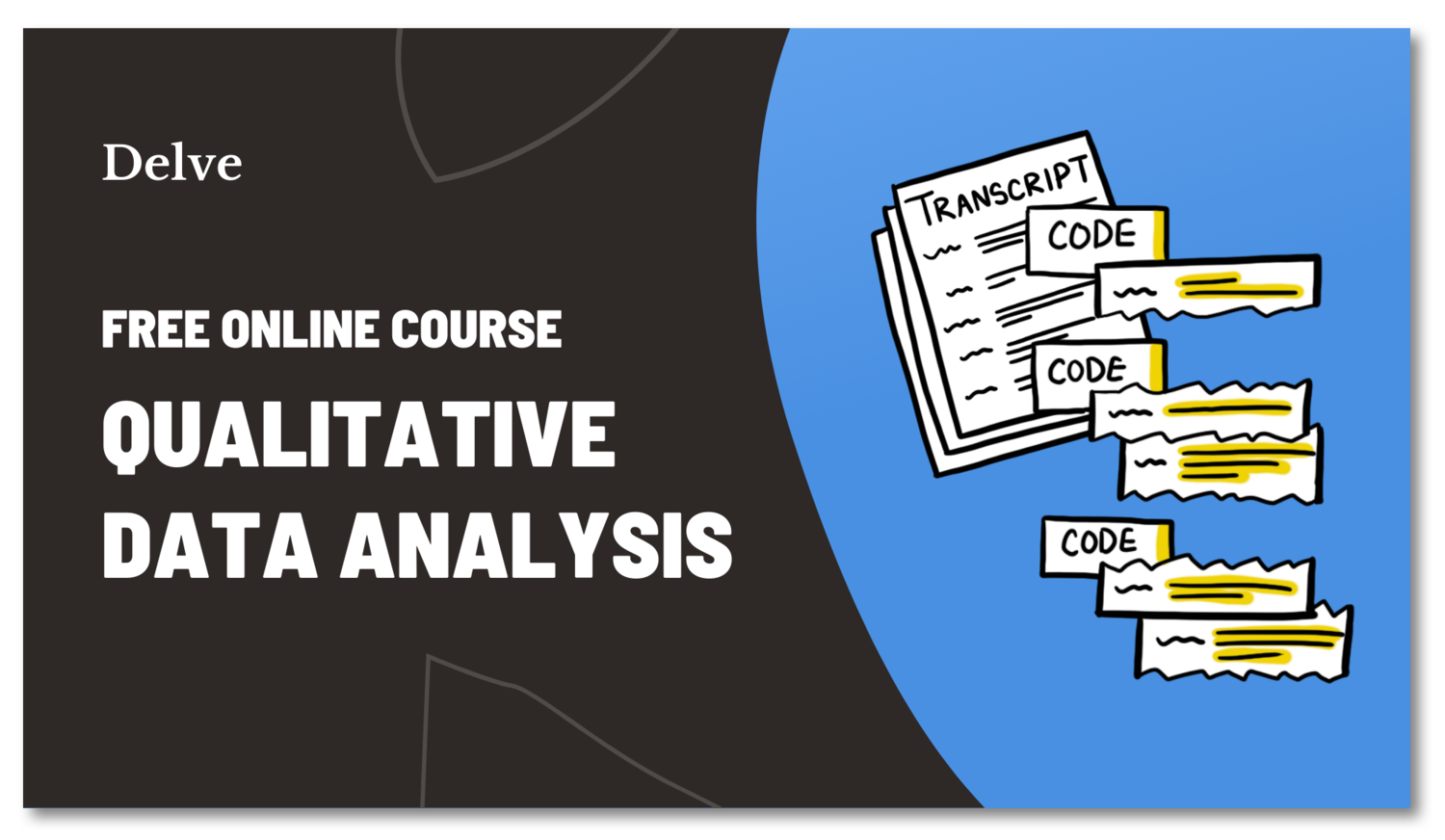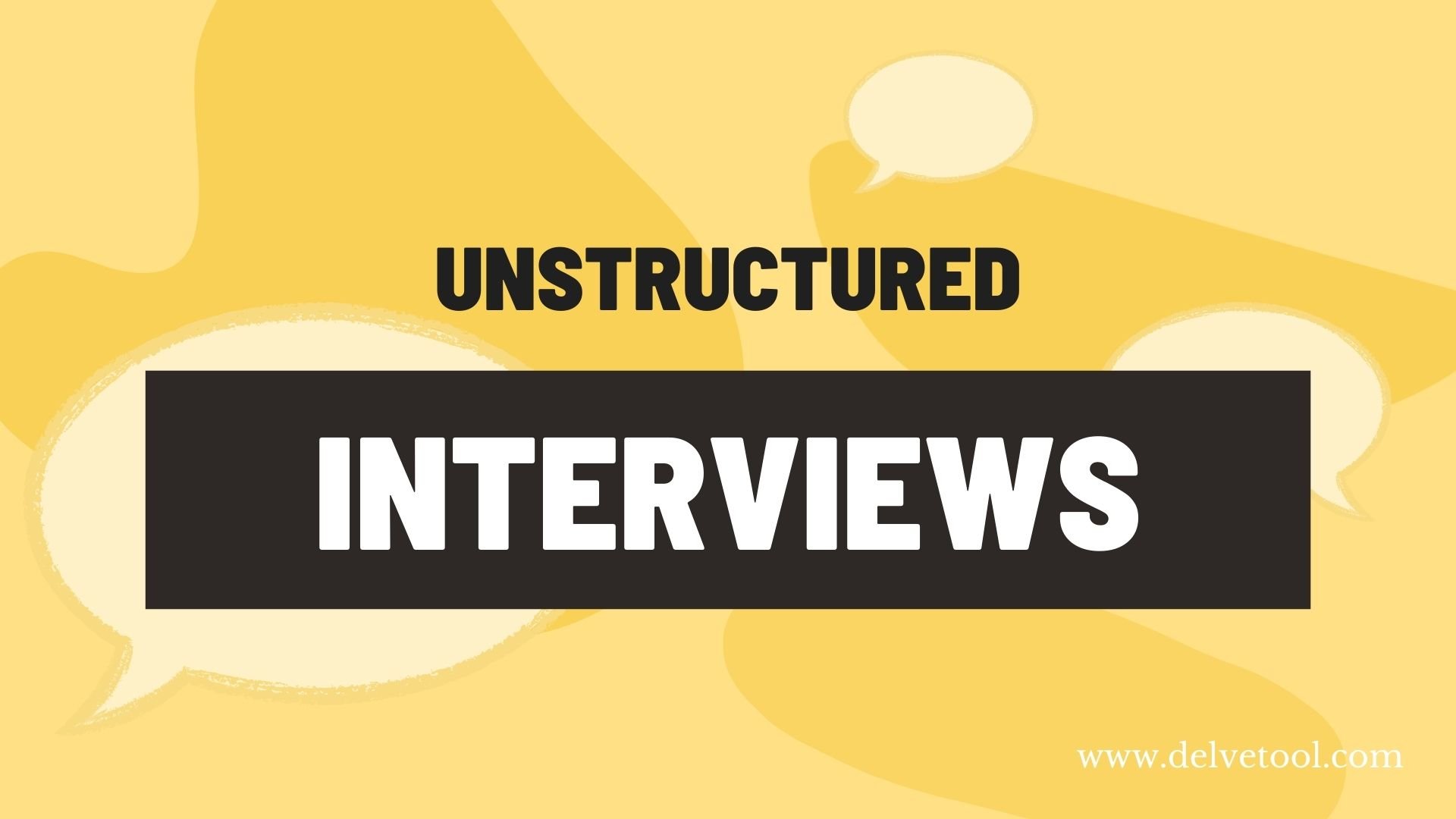Unstructured Interviews
Unstructured Interview Definition
An unstructured interview, sometimes called a non-directive interview, is a data collection method in which the questions or the order they are asked are not predetermined. Instead, the interviewer asks open-ended questions and relies on the participants’ answers to proceed with the interview and collect detailed data on the research topic.
Unstructured interviews are generally flexible, informal, and qualitative. They flow naturally like everyday conversation. Researchers utilizing this data collection method go to the field without preset questions or rating scales. Although there are no predetermined questions in an unstructured interview, it is still purposeful as the interviewer controls the conversation to ensure the participant stays on the research topic and provides relevant information.
To gain better insight and gather valuable information during an unstructured interview, the researcher must have detailed knowledge about the topic of study. Also, the interviewer should be skilled at questioning and adjusting the conversation’s direction.
What is the difference between structured, unstructured, and semi-structured interviews?
The differences between structured, semi-structured, and unstructured interviews lie in their definition, question type, number of questions, interview sequence, uses, etc.
Definition
A structured interview is a type of interview in which the interviewer asks the participants a set of predetermined standardized questions in a preset order. On the flip side, an unstructured interview is a type of interview in which the questions or the order in which they are presented are not predetermined.
Between the two types of interviews above is a semi-structured interview, which shares the characteristics of both unstructured and structured interviews. A semi-structured interview is a type of interview in which some questions are predetermined while others are not. The researchers may first ask predetermined questions and then follow them up with probing questions to understand the participants’ thoughts and beliefs better.
Number of questions
In structured interviews, the number of questions is preset. However, the number of questions in semi-structured and unstructured interviews is not fixed.
Type of questions
Structured interviews often utilize closed-ended questions, while semi-structured and unstructured interviews utilize open-ended questions. Closed-ended questions limit the participants’ responses by asking them to choose from predefined answers. For example, the respondents may be asked to choose between Yes or No.
On the other hand, open-ended questions allow participants to provide free-form answers. Here, respondents can provide answers in their own words without being restricted to a set of answers. In simpler words, the participants construct their own answers rather than choosing from a set of predefined answers.
Interview Sequence
The interviewer in a structured interview follows a preset order when asking questions. However, there is no pre-set sequence in a semi-structured and unstructured interview as the questions are open-ended, and the interviewer often relies on the respondent’s answers to ask more questions.
Uses/Application
Another difference between structured, semi-structured, and unstructured interviews is their application. Structured interviews are predominantly used by researchers conducting quantitative studies to validate results. However, unstructured and semi-structured interviews are used in qualitative studies to explore participants' thoughts and beliefs about the topic under investigation.
Unstructured Interview Questions
Qu and Dumay, in their study on “The qualitative research interview,” identified some types and examples of unstructured questions as:
Introducing questions - used to kickstart the interview
Examples: “Can you tell me about (...)?” “Do you remember an occasion when (...)?”
Probing questions - used to get a more detailed narrative
Example: “Could you say something about that?” “Do you have further examples of this?”
Interpreting questions - used to rephrase an interview’s answer to clarify the information provided
Example: “Is it correct that you feel that (...)? “Does the expression (...) cover what you have just said?
What are the advantages of unstructured interviews?
Some of the advantages of unstructured interviews are:
Unstructured interviews are very flexible, allowing the researcher to develop a rapport with the participant. Thus, it helps the interviewer to get quality insights into the participants' beliefs, thoughts, perceptions, and experiences.
Unstructured interviews flow like natural conversation. Hence, participants tend to feel more comfortable and at ease sharing their personal experiences.
Unstructured interviews minimize misrepresentation and misinterpretation of the participants’ responses as the interviewer gets the chance to ask probing and interpreting questions to clarify the participants’ comments.
Unstructured interviews allow the researcher to understand why people behave or react a certain way. Thus, they are very useful for studies involving complex and sensitive matters.
Qualitative analysis doesn't have to be overwhelming
Take Delve's free online course to learn how to find themes and patterns in your qualitative data. Get started here.

What are the disadvantages of unstructured interviews?
The disadvantages of unstructured interviews include:
One of the main disadvantages of unstructured interviews is that it requires more time and financial resources than structured interviews, especially when the interview involves large samples and the researcher has to travel to different geographical localities.
The interviewer controls the flow of an unstructured interview. Hence, this type of interview is more susceptible to the subconscious biases of the interviewer.
Comparing and analyzing data generated from different interviews can be very challenging as lived experiences usually differ from one participant to the other. Comparison is also difficult because participants provide answers in their own words. In addition, manually comparing data from this type of interview with those from other data collection methods is difficult. However, you can do these comparisons more easily by using qualitative coding software like Delve tool.
Due to its time-consuming nature, unstructured interviews generally apply to small samples, thus limiting their generality and reliability. If you are unsure about the reliability of your small samples, you can measure it using practices like inter-coder reliability.
How to analyze unstructured interviews
Transcribe your interview recordings
The first step to take after conducting unstructured interviews is to create a written copy of the interview you recorded. It is best if you transcribe words for words. Don’t know how to transcribe your recordings? Click here to learn how to transcribe interviews.
Organize and code the interview transcripts
The next step is reading through the transcripts thoroughly and identifying themes that come up repeatedly in the data, collapsing them into categories, and labeling them so you can understand the relationship between them. You can code your data manually or get it done faster using our coding software.
Analyze your data
After coding, the next step is to analyze your data to uncover meaningful insights and draw correlations from them. You can learn how to get this done by reading our essential guide to coding qualitative data. In addition, you can analyze unstructured interviews automatically, get better insights into your data, and save more time using Delve's qualitative analysis software.
Report your findings
The final step is to report your research findings to the relevant stakeholders.
Use Delve to help you code and analyze unstructured interviews.
Looking for information on how to code or analyze the data you collected through unstructured interviews? Make data coding and analysis easier and get deep insights into your data using Delve qualitative data analysis tool. Start a free trial of Delve today!
References:
Bihu, R (2020). Using Unstructured Interviews in Educational and Social Science Research: The Process, Opportunity, and Difficulty. Global Scientific Journal.
Qu, S; Dumay, J (2011) The qualitative research interview. Qualitative Research in Accounting & Management.
